Trout Lily
- September 25, 2023
- 0 comment

The Trout Lily, scientifically known as Erythronium americanum, is a charming spring ephemeral native to the woodlands of eastern North America. This perennial wildflower is renowned for its delicate, nodding yellow blooms that resemble the speckled patterns of a brook trout, hence its common name. Trout Lilies are a sure sign of spring’s arrival, as they burst forth from the forest floor shortly after the winter snow has melted. Their leaves are equally captivating, sporting attractive mottled patterns that add to their overall allure. These plants play a vital role in woodland ecosystems by providing early-season nectar and pollen for pollinators and acting as a food source for various woodland creatures.
Tall meadow rue is a tall and slender plant, typically growing to be 3-7 feet tall. It has delicate, feathery leaves that are divided into many small leaflets. The flowers of tall meadow rue are small and white, and they are arranged in fluffy clusters at the top of the plant. The flowers typically bloom in mid-summer and last for several weeks.
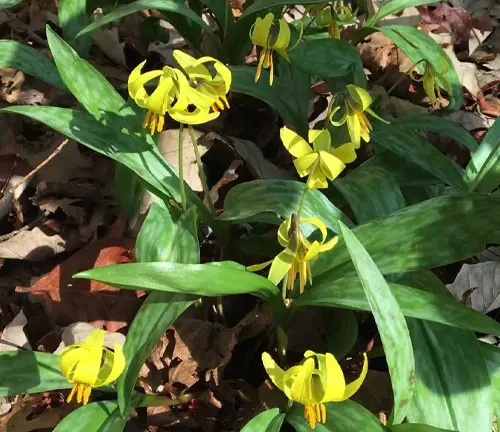
Tall meadow rue is a relatively easy plant to cultivate in the garden. It prefers moist, well-drained soil. Tall meadow rue can be propagated by seed or division. To propagate by seed, sow the seeds in the fall or winter. The seeds will germinate in the spring. To propagate by division, dig up a clump of the plant in the spring or fall and divide it into several smaller clumps. Replant the clumps in moist, well-drained soil.
| Characteristic | Description |
| Scientific Name | Erythronium americanum |
| Common Names | Trout Lily, Dogtooth Violet, Adder’s Tongue |
| Plant Type | Perennial Wildflower |
| Native Range | Eastern North America |
| Leaf Characteristics | Lance-shaped leaves with distinct mottled patterns resembling a trout’s skin. |
| Flower Appearance | Delicate, nodding flowers with six petal-like tepals in shades of yellow, white, or pink. |
| Bloom Time | Early spring, typically March to April, depending on location and climate. |
| Fragrance | Subtle, pleasant fragrance often detectable when in close proximity to the flowers. |
| Habitat | Woodlands, deciduous forests, and shaded areas with well-drained soil. |
| Light Requirements | Partial to full shade; prefers dappled sunlight. |
| Soil Preferences | Moist, humus-rich, well-drained soil with a slightly acidic to neutral pH. |
| Height | Typically 4 to 12 inches (10 to 30 cm) tall. |
| Spread | Forms clumps, spreading slowly through underground rhizomes. |
| Cultivation | Can be cultivated in woodland gardens with appropriate soil and shade conditions; best propagated from bulbs or rhizomes. |
Getting to Know the Botanical Beauty
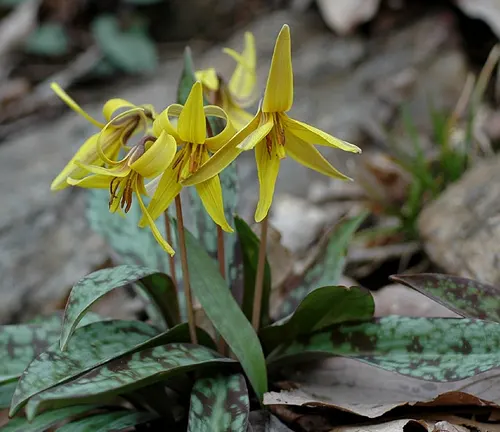
As winter’s icy grip loosens, the woodlands of North America awaken with a burst of color and life, and leading this grand procession is the enchanting Trout Lily, scientifically known as Erythronium americanum. Named for its distinct, trout-like leaf patterns, this perennial wildflower weaves a captivating tale of beauty and ecological importance. In this article, we’ll delve into the world of Trout Lilies, exploring their woodland elegance, ecological significance, cultivation, conservation, the subtle fragrance that graces the air, their role in soil stabilization, and the multitude of benefits they bring to the natural world.
Woodland Elegance
Trout Lilies, among the first heralds of spring in North American woodlands, offer a timeless spectacle of elegance. Their slender, lance-shaped leaves, adorned with intricate, mottled patterns reminiscent of a trout’s skin, are a testament to the artistry of nature. Yet, it is their delicate, nodding blossoms, ranging from sunny yellow to pristine white and even a gentle hint of pink, that truly steal the spotlight. Join us as we explore the captivating aesthetics of Trout Lilies, uncovering the secrets behind their enduring woodland charm.
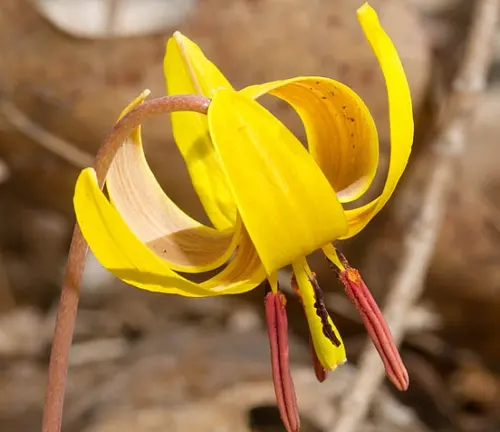
Ecological Importance
Beneath the captivating beauty of Trout Lilies lies a crucial ecological role. As one of spring’s earliest bloomers, they offer a lifeline to pollinators emerging from winter’s slumber. Native bees and butterflies eagerly partake in their nectar and pollen, initiating the intricate dance of pollination that sustains the surrounding flora. Furthermore, Trout Lilies become a vital part of the forest’s food web, providing nourishment for herbivores and herbivorous foragers. In this section, we’ll delve into the ecological importance of Trout Lilies and their contributions to the vibrant tapestry of forest life.

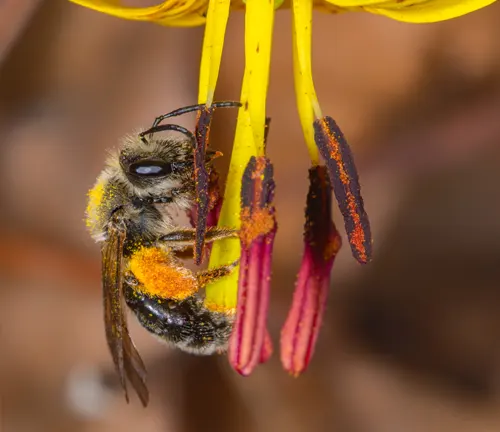
Cultivation and Conservation
While Trout Lilies thrive in their natural woodland habitats, some enthusiasts seek to cultivate these botanical gems in their own gardens. Understanding their preferences for shade, moisture, and well-drained soil is essential for successful cultivation. However, as with many native species, Trout Lilies face threats from habitat loss and invasive species. Conservation efforts are vital to ensure their continued existence and the preservation of the ecosystems they support. Join us as we explore both the joys of cultivating Trout Lilies and the imperative of conservation.
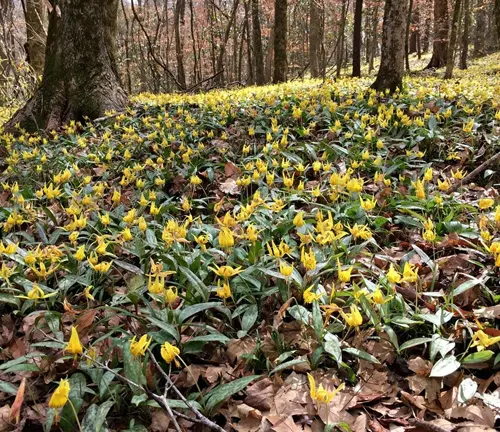
Fragrance
The allure of Trout Lilies extends beyond their visual charm. A lesser-known but delightful aspect of these wildflowers is their subtle fragrance. Bend down to the forest floor, and you might catch a whiff of their delicate perfume, a scent that adds an extra layer of enchantment to their presence. In this section, we’ll delve into the intriguing world of Trout Lily fragrances, exploring the scents that reward those who take the time to experience the woodland in all its sensory glory.
Soil Stabilization
Beneath the surface, Trout Lilies contribute to the stability and health of woodland ecosystems. Their roots and bulbs play a crucial role in soil stabilization. By anchoring loose forest soil, they prevent erosion, which can have far-reaching effects on the overall ecosystem. We’ll uncover the underground world of Trout Lilies and their hidden but vital role in maintaining the integrity of woodland soils.
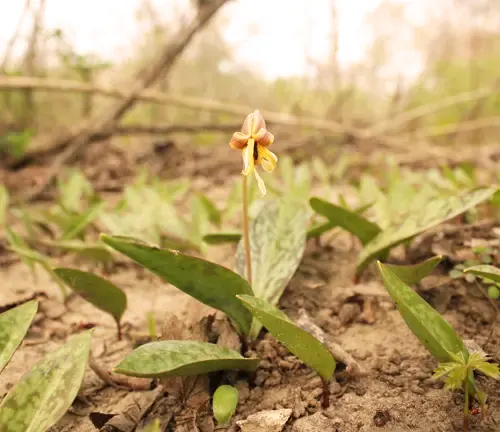
Benefits Beyond Beauty
In closing, Trout Lilies are much more than just a feast for the eyes. Their benefits extend to supporting pollinators, nourishing woodland creatures, and stabilizing forest soils. As we’ve explored in this article, they are a cornerstone of woodland ecosystems, and their preservation is essential for the overall health of these delicate environments. Whether you’re an avid gardener, a nature enthusiast, or simply curious about the intricate workings of the natural world, the Trout Lily offers a captivating story of botanical beauty, ecological significance, and the fragrant essence of spring.

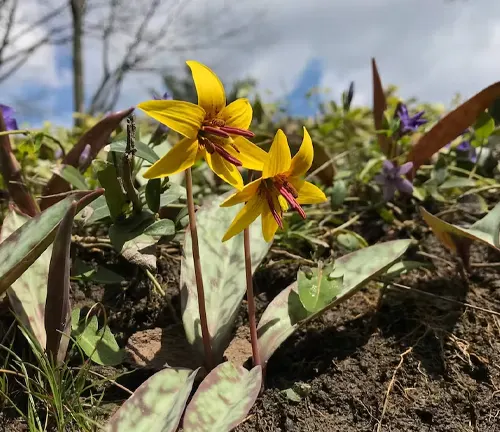
Different Species of Trout Lily
Erythronium albidum
Commonly referred to as White Trout Lily, this species, as the name suggests, produces white flowers. It is found in various parts of eastern North America.

Erythronium dens-canis
Often called Dog’s Tooth Violet or Dogtooth Fawn Lily, this species is native to Europe and Asia. It has pink or purple flowers and is known for its distinctive dog-toothed bulbs.
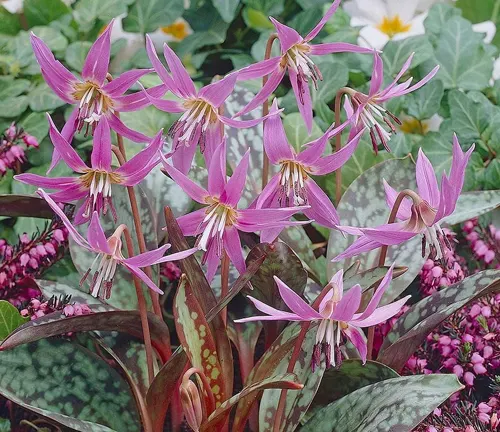
Erythronium grandiflorum
This species, also known as Yellow Avalanche Lily, is found in western North America. It produces bright yellow flowers and is often seen in mountainous regions.

Erythronium tuolumnense
Tuolumne Fawn Lily, as it’s commonly known, is native to California. It features yellow to cream-colored flowers and thrives in the Sierra Nevada region.
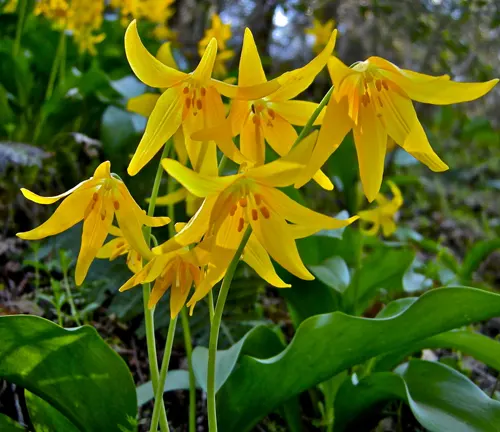
Erythronium japonicum
Native to Japan, this species has become popular in horticulture. It produces white or pale pink flowers and is sometimes called the Japanese Dog’s Tooth Violet.
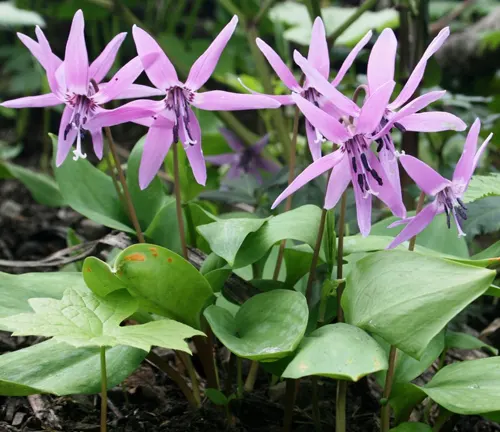
Erythronium hendersonii
Henderson’s Fawn Lily is found in the Pacific Northwest of North America. It displays striking pink to lavender flowers and is a favorite among native plant enthusiasts.
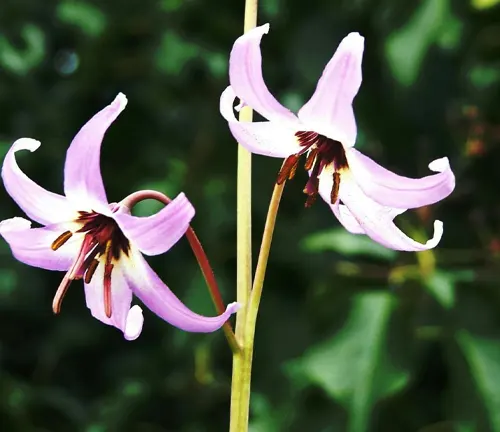
Erythronium revolutum
This Trout Lily species is native to the western United States and features delicate pink to lavender flowers.
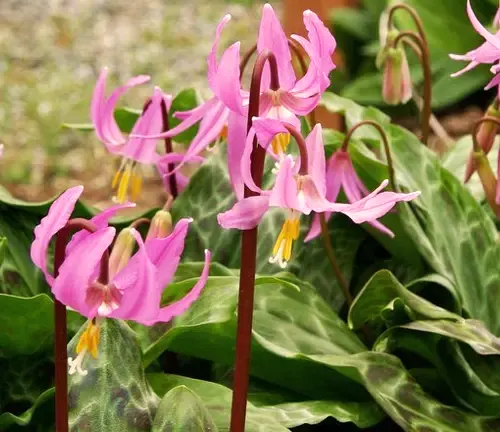
Frequently Asked Questions (FAQs)
- Do Trout Lilies always have mottled leaves resembling trout skin patterns?
Yes, the mottled leaves are a defining feature of most Trout Lily species, but there can be variations in the intensity and pattern of the mottling. Some may have more pronounced trout-like markings, while others might exhibit subtler variations. - Why are they called “Trout Lilies”? Do they have any connection to fish?
Trout Lilies are named for the distinctive mottled patterns on their leaves, which are said to resemble the markings found on the skin of brook trout, a species of fish commonly found in North American streams and rivers. However, there is no direct biological connection between the plant and the fish. - Are all Trout Lilies yellow in color, or do they come in other shades as well?
While many Trout Lilies have yellow flowers, some species and variations can produce white, pink, or lavender blossoms. The specific flower color can vary depending on the species and geographic region. - Are Trout Lilies edible, and have they been used in traditional cuisines?
Some indigenous cultures in North America have used Trout Lilies as a food source. The corms (underground storage organs) of Trout Lilies are edible, but they should be consumed in moderation and prepared properly. Harvesting them from the wild is discouraged in conservation-minded communities. - What is the lifecycle of Trout Lilies, and how long do they bloom each year?
Trout Lilies are perennial plants with a relatively short blooming period. They typically emerge in early spring and bloom for a few weeks, depending on weather conditions and location. After flowering, they gradually go dormant until the following spring when the cycle repeats.


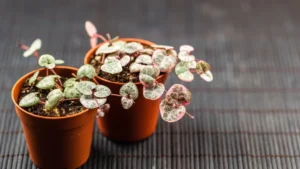
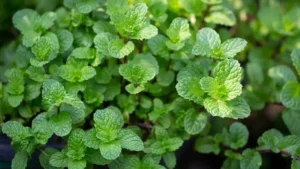
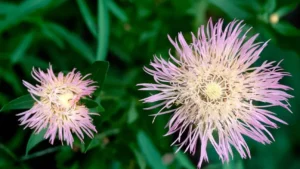
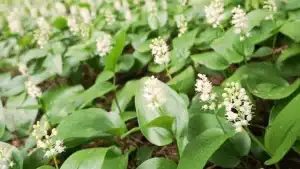
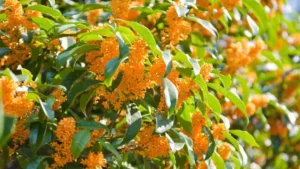
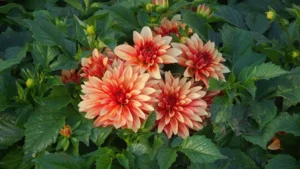
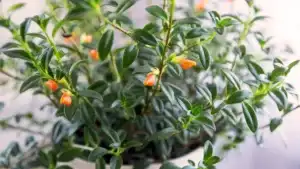
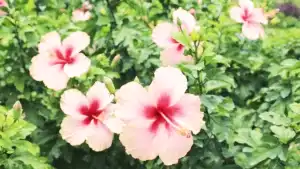

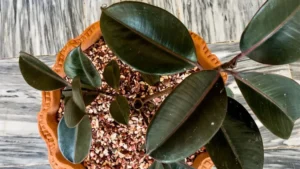
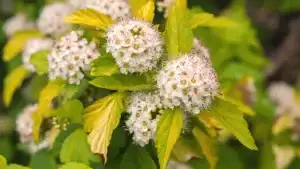

Leave your comment